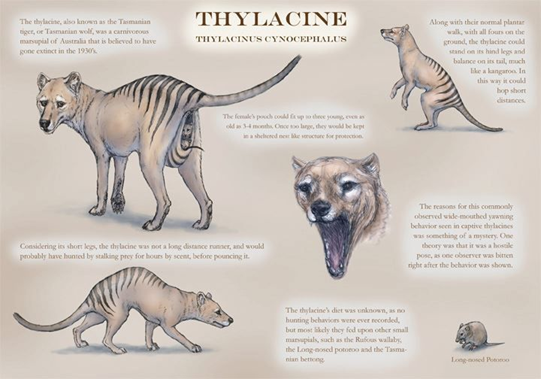

Context
Scientists in the US and Australia have embarked on a $15-million project to resurrect the thylacine or Tasmanian Tiger, a marsupial that went extinct in the 1930s, using gene-editing technology.
About
Thylacine or Tasmanian Tiger:
- Tasmanian Tiger (Thylacinus cynocephalus), the only animal in the Thylacinidae family to survive in modern times, was a marsupial mammal that raises young ones in a pouch.
- Even though the species earned its nickname Tasmanian Tiger because of the stripes along its back, it was a slow-paced carnivorous that usually hunted alone or in pairs at night.
- The sharply clawed animal had a dog-like head and ate kangaroos, other marsupials, small rodents, and birds.
- At one time the Thylacine was widespread over continental Australia, extending north to New Guinea and south to Tasmania.

The resurrection process
- Even though the last living thylacine died over 86 years ago, many embryos and young specimens of the species have been preserved.
- For the de-extinction project, the scientists will be using a genome sequenced from a DNA extracted from a 108-year-old specimen held at Australia’s Victoria Museum.
- De-extinction will not be complete until the success of the rewilding process – reintroducing the animal to its native habitat — which will ‘stabilise the fragile ecosystem of Tasmania.’
Why is it the right choice?
- The thylacine is a great candidate for de-extinction because it only went extinct in 1936 due to human hunting and the ecosystem we are looking to return it to is still intact.
|
De-Extinction:
How De-extinction Works through Genome Editing?
|

